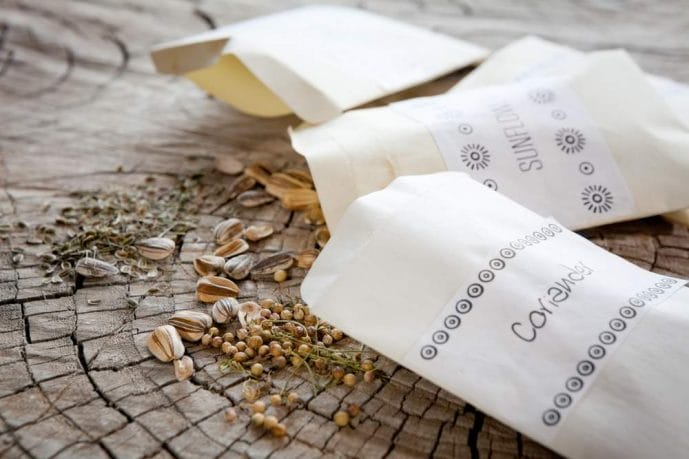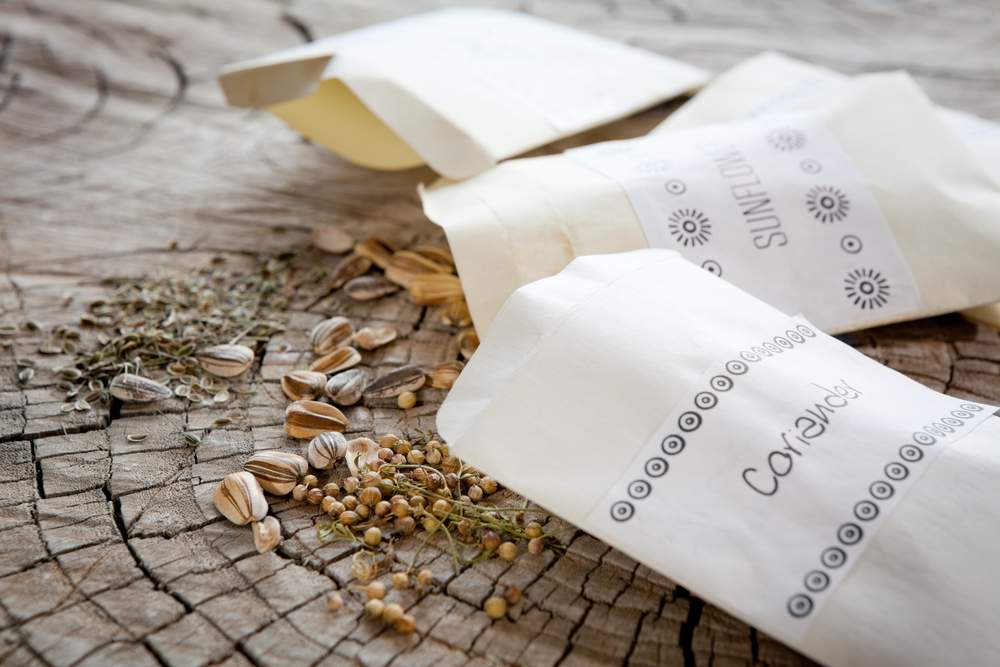
Seeds can be a great gift for any gardener among friends or family, but getting them to travel long distances can be a worrying prospect. So if you're considering seeds as a gift for someone, you've probably wondered – can seeds be mailed in a regular envelope?
Regular envelopes are not an ideal way to ship seeds, even if they come in a seed packet. With small enough seeds and proper precautions, however, you can make it work.
Keep reading to learn more about this topic and some of the best ways to transport and mail seeds.
Table of Contents
Sending seeds through a regular envelope is not the best option for ensuring the seeds arrive in good condition, as the envelope may not provide enough protection during the shipping process.
However, it is still possible to send seeds this way if you take additional measures to prevent damage.
Some steps you can take include sealing the seeds in a moisture-proof bag or wrap, adding padding or cushioning inside the envelope to protect the seeds, and writing Fragile or Handle with Care on the envelope to alert postal workers to the contents.
If you want to send seeds in a regular envelope, be sure they're smaller seeds that can fit easily. And for an easy, cheap, and reusable form of padding, many people use paper towels.
Can I Use Regular Shipping Envelopes?
You can use regular shipping envelopes, and they have some advantages over regular letter-writing envelopes, in that shipping envelopes usually come with some form of padding installed.
Even if you get a non-padded envelope, shipping envelopes are usually better sealed and sturdier, which will offer more protection for your seeds.
What Seeds Are Good For Sending In A Regular Envelope?
The best seeds to send with a plain envelope are smaller ones, so you have plenty of room for protective layers.
Some recommended seeds that do better with mailing in regular envelopes include:
- Tomato seeds
- Pepper seeds
- Mustard seeds
- Orchid seeds
How To Mail Seeds In A Regular Envelope:
If you're going to mail seeds in a regular mailing envelope, then you'll need to take some precautions to make sure they're safe.
- Pack seeds carefully in padding so they'll be protected from crushing.
- If you're mailing packets, secure each packet so it can't be crushed against another.
- Sealing seeds in plastic bags to prevent contamination or moisture is recommended.
- Make sure the envelope is well sealed to prevent any loose seeds from falling out.
How Do You Make a Paper Envelope For Seeds?
There are many different methods.
The simplest is to simply take paper and fold it into an overlapping pattern, then use a touch of adhesive to secure them closed.
- Cut paper into squares or rectangles
- Fold it into an envelope shape of your preference
- Seal it
If you're so inclined, you can also look up origami techniques, which can permit you to create and seal the envelopes without the use of adhesive.
If you're feeling ambitious about making traditional paper seed envelopes, you can make seed paper envelopes.
How Do I Make Seed Paper Envelopes?
- Take recycled paper, add water, and turn it into a pulp.
- Add seeds to the pulp.
- Lay it out and let it dry.
This will give you what is known as Seed paper, which can be shipped as it, with the paper pulp acting as a form of protection for your seeds.
In fact, you can even use this ‘seed paper' as regular paper and send it as a letter, with seeds and greetings both on the same page.
What Envelopes Are Best To Mail Seeds?
The most common and highly recommended envelopes are paper seed envelopes lined with polyurethane or a similar lining. These envelopes are usually paper lined with protective materials and are best for loose seeds.
For seeds in a closed packet, any envelope will work, but getting a padded envelope like the ones used for loose seeds will give your seeds an extra level of protection.
5 Things To Consider When Sending Seeds Through The Mail:
When sending seeds through the mail, you'll want to keep the following in mind:
1. Padding is necessary to ensure seeds are not crushed or otherwise damaged.
2. Sealing seeds away from moisture is important to increase their longevity
3. The package should be well sealed to keep out moisture
4. Loose seeds must be protected by paper towels or something similar.
5. Pre-made packets should be arranged in the envelope so seeds are not crushed against each other or compressed too much.
What Are Alternative Ways To Send Seeds?
You can use local exchanges to transfer seeds to people in your area. Locations like a Farmer's Market or other gathering spots are good places to make seed swaps.
For long distances, you can use a seed exchange service.
You can also seal seeds into a larger container, like a jar, which will protect them better from potential damage and weather.
Is It A Good Idea To Send Seeds Through The Mail?
Sometimes, sending seeds through the mail is the best way to get them to where you want them to be. After all, not all seeds are found in every location.
Also, homegrown seeds can be hard to transport, and sending them through the mail may actually be easier and gentler than trying to transport them by hand.
How Long Will Seeds Last If Mailed in An Envelope?
Properly stored and shipped in a sealed envelope with appropriate precautions, your seeds should last anywhere from one to five years.
Read: How To Germinate 50-Year-Old Seeds.
Looking for a great seed company? Check out Seeds Now
Conclusion
In short, you can send seeds in an envelope, even a plain paper envelope you'd use for letters or paying bills.
You'll just need to ensure your seeds are small and that you aren't trying to put too many in the envelope.
If you do choose to use a regular envelope, then you'll want to make sure you take the proper precautions. So make sure your seeds are well secured against jostling, moisture, and from being crushed.
With appropriate precautions in place, there's no reason your seeds shouldn't arrive unscathed and ready for use for months, even years, to come



